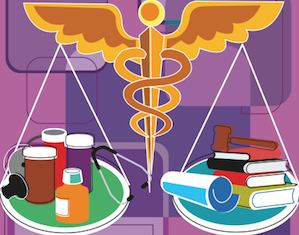Alan W Clark

July 19, 2024 | New York Law Journal
Medical Malpractice Contingency Fee Schedule Needs AmendmentJudiciary Law section 474-a, as amended effective July 1, 1985 sets forth a contingency fee schedule and provision for application for increased fee in extraordinary circumstances. In practice, the fee schedule creates inherent conflict, is unfair and deprives many victims of malpractice the opportunity to hire competent counsel. Applications for enhanced fees are rarely granted. The proposed Amendment set forth in NYAB 7448 provides much needed changes to the Statute.
By Alan W. Clark
21 minute read

November 15, 2023 | New York Law Journal
Pending Amendments to Public Health Law Expand Access But Fall ShortTrial attorney Alan Clark discusses the HIPAA privacy right to access and pending amendments to section 18 which expand the right to access but, in the author's view, do not adequately address these deficiencies and other provisions which appear to be in violation of federal regulations established under HIPAA, HITECH, and the 21st Century Cures Act.
By Alan W. Clark
22 minute read

August 09, 2023 | New York Law Journal
Pre-Verdict Interest in Personal Injury Actions: It's About Time!Trial attorney Alan Clark shares his opinion that it is "about time that New York amend CPLR section 5001 to allow recovery of pre-verdict interest on awards in personal injury actions." He concludes that "pre-verdict interest would go a long way to encourage settlement of cases well before the parties are told to pick a jury and substantially reduce calendar congestion."
By Alan W. Clark
18 minute read

November 04, 2022 | New York Law Journal
Negligence of Health Care Providers: Malpractice or Ordinary Negligence?The distinction between medical malpractice and negligence is a subtle one, for medical malpractice is but a species of negligence and no rigid analytical line separates the two. This article will discuss the factors and principles used by the appellate courts in making this distinction.
By Alan W. Clark
23 minute read

June 29, 2022 | New York Law Journal
Bad Faith Claims Against InsurersIt is readily apparent that proving bad faith against an insurer for failure to settle within the policy limits is very difficult, especially in medical malpractice cases where there are usually opposing experts for each side raising questions about the defendant's liability.
By Alan W. Clark
14 minute read

February 18, 2022 | New York Law Journal
Lost Chance for Better Outcome and Proximate Cause: Case UpdatesRecent appellate division decisions have made it abundantly clear that the medical malpractice doctrine of lost chance of a better outcome is an accepted basis for recovery of substantial damages.
By Alan W. Clark
15 minute read

August 23, 2021 | New York Law Journal
Proposed Jury Charges and Voir Dire in Lost Chance CasesIn view of the case law and ambiguous pattern jury charges, it is highly recommended that counsel address proximate cause issues in lost chance cases with the trial judge as early as possible and during jury voir dire.
By Alan W. Clark
14 minute read

March 29, 2021 | New York Law Journal
Impeachment of Experts by Medical or Scientific LiteratureThis article will explore the subject matter of impeachment of expert witnesses by the use of medical or scientific literature containing contrary opinions during cross-examination.
By Alan W. Clark
17 minute read

October 21, 2020 | New York Law Journal
Lost Chance as a Substantial Factor in Causing Injury: Part 2Part 1 of this article addressed proof of diminished chance for a cure or better outcome or increased injury and pain and suffering as a substantial factor of injury in failure to diagnose cancer cases. Part 2 addresses the application of law and evidence to medical malpractice cases dealing with failure to diagnose other medical conditions and illness.
By Alan W. Clark
13 minute read

October 14, 2020 | New York Law Journal
Lost Chance as Substantial Factor In Causing Injury: Part 1In medical malpractice cases, competent poof of a diminished chance for a cure or better outcome or increased injury and pain and suffering may be a substantial factor or proximate cause of injury. Part 1 of this two-part series deals with such evidence as presented in failure to diagnose and treat cancer cases.
By Alan W. Clark
13 minute read



